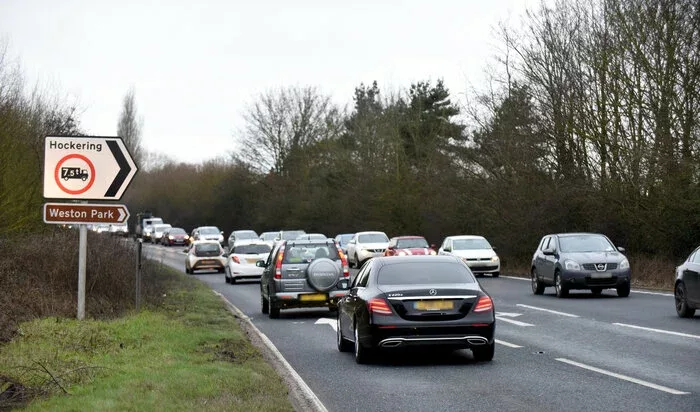Three multi-million-pound road schemes aimed at improving safety and reducing journey times around Norwich are a step closer after three Court of Appeal judges upheld the original decisions by the Secretary of State for Transport to grant development consent orders.
Today (22 Feb), and following an earlier one-day hearing by the Court of Appeal in London on 16 January, the judges found the DCOs, which are a type of planning permission granted by the Secretary of State for Transport, were appropriately assessed for carbon emissions and will stand.
Their judgment concluded the Secretary of State for Transport’s decision to adopt the methodology used by National Highways to assess the cumulative carbon effects of the schemes was not – as the claimant suggested – irrational. This was because it included consideration of the total cumulative emissions on the affected road network, which were in line with legal requirements of relevant carbon budgets, at a point where all three schemes would be in place – and this detail formed a fundamental element of the decision to grant development consent.
The three National Highways A47 road improvement schemes are:
- Dual carriageway and junctions on the A47 between Blofield – North Burlingham
- Dual carriageway and junctions on the A47 between North Tuddenham – Easton
- Redevelopment of Thickthorn junction (where A47 meets the A11 south of Norwich)
The A47 will be dualled between North Tuddenham & Easton – meaning less of this
Chris Griffin, Programme Leader for National Highways in the East Region, welcomed the judgment, but acknowledged the impact the legal process has had on the schemes.
“The judgment will be welcome news for people living and working around Norwich. We know from speaking to local people there is overwhelming support for these schemes and this is a positive step in progressing our plans to improve journey times and increase safety on the A47.”
Work on all three schemes had been expected to start shortly after their DCO decisions in 2022, but this was put on hold pending the outcome of legal challenges. These projects would have all been completed by the end of next year but have been delayed by over 20 months.
The original completion date for the Blofield scheme was this summer. The Tuddenham upgrade was due to open to traffic in winter 2025, and the Thickthorn junction improvements were scheduled to be finished in the early part of 2025.
National Highways will now work with its contractors to establish new timescales, including the start of major construction, for all three projects. It says this will be announced over the coming weeks.
The government-owned company says each of the three schemes has been specifically designed to increase safety and help to reduce congestion on the A47. The latest traffic modelling data shows that a combined figure of over 100,000 vehicles each day pass through the sections where the upgrades are planned. Following completion of the projects, casualty projections over the next 60 years suggest that as many as 119 fatal or serious injury collisions could be prevented.
All the schemes are also designed to provide an overall ‘biodiversity net gain’ – that means a real focus is given to retaining existing habitats. Where it is absolutely necessary to remove any form of biodiversity, National Highways will ensure more than what is taken is replanted or new habitat created, such as grassland, hedgerows, ponds and woodland.
Addressing the legal challenges, Chris added: “I am very pleased the Court of Appeal has decided that the DCOs for these schemes were valid. This outcome potentially puts us one step closer from progressing these important road improvement projects unhindered by further delay.
“The A47 is a vital artery connecting the east of the country with the heart of UK. Being in a position to move forward with our job of delivering a safer and more reliable road that will contribute towards long-term economic growth for the region and help to connect people and communities is very exciting.”
The claimant now has 28 days to consider whether to make an application to the Supreme Court if he wishes to continue to challenge the judgment.
(Picture – National Highways)






















